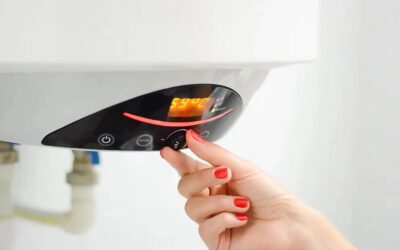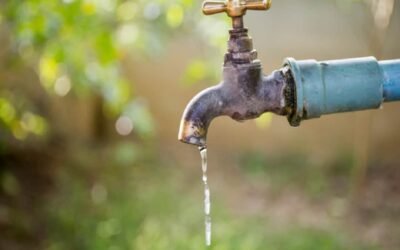Your home is cold due to the hard freeze of last night. The morning is bright, and you make your way to the kitchen. You’re about to make your coffee, but one flick of the faucet’s handle makes you shiver.
There isn’t any water, and you’re aware of the reason:
In the middle of the night, the pipes began to freeze.
If you’re patient enough, will the frozen pipes melt by themselves? If not, then how cautious are you required to be when you first begin unfreezing pipes?
Whatever several instances you’ve had to deal with freezing pipes is not simple.
How to Identify Frozen Pipes
Find the frozen pipe by finding the reason why it isn’t working.
If it’s a kitchen tap that doesn’t supply water, and a sink that won’t refill, check the plumbing from the point of failure backward.
- Check for condensation or a light coating of frost over pipes.
- Tap pipes with a small device’s help, then listen to a steady sound.
- Tap pipe surfaces to find extreme cold areas.
Check out plumbing in the basement, as well as plumbing in crawl spaces. Ensure you check the water main entering the home, and also remember to check the outside faucets.
How Do Unfreeze Water Pipes
Suppose you ask a dozen homeowners to defrost pipes to unfreeze pipes. In that case, you’ll get several different perspectives on all things, from techniques to tools.
It’s not entirely correct, but it’s not completely right.
If you haven’t prepared your plumbing for the winter, you’ll still be ready for freezing plumbing issues.
How to Thaw a Drain Pipe
Turn off water flow to the plumbing system you’re working on before defrosting pipes.
Three methods are highly effective for melting out frozen drain pipes.
- It gets recommended to freeze pipes using the help of a space heater or heater that gets placed in a minimum of 3′ from flammable materials.
- Use a hair dryer to send warm air upwards through frozen pipe lengths.
- Wrap frozen pipes using an electric heating cable, and oversee the process.
The strategies for thawing work on all plumbing that’s accessible, including plumbing in crawlspaces and basements.
How to Thaw Frozen Pipes in a Wall
Turn off the main water valve before trying to defrost frozen pipes within walls.
This type of plumbing issue is more challenging to repair as opposed to frozen drainpipes because the options aren’t as extensive:
- The furnace should turn up and open cabinets and closets next to frozen pipes.
- Place a fan heater in a position to blast directly through wall vents near frozen pipes.
How to Thaw Exposed Pipes
Pipes exposed in basements and supply lines underneath sinks usually get removed in just a few hours. If you’re trying to thaw pipes underneath the sink, make sure to turn off the faucet to allow melting water doesn’t be released.
How to Thaw Enclosed Pipes
Most plumbing systems in homes stretch across areas that are difficult to reach. You cannot get the frozen pipe by breaking a wall or working beneath the sink.
Suppose you have problems with pipes frozen inside enclosed areas such as crawl spaces. In that case, it gets recommended to contact restoration experts.
How to Thaw Frozen Pipes Outside
If you’re considering how to unfreeze a frozen outside faucet or outdoor pipes, ensure you are safe. Hair dryers and heat tape can use to accomplish the task. However, it would be beneficial to exercise caution when using electrical equipment outside in wet conditions.
If uncomfortable with your alternatives, wrap the pipe or open the hose bib using towels. Warm up a teakettle, then slowly drizzle hot water onto the towels.
It might take several attempts. However, this method is more secure than using electricity when you’re on the ground in the snow.
How Long Does It Take for the Pipes to Unfreeze?
It is tempting to let the pipes melt all by themselves. Keep in mind:
Based on the weather conditions, the process could take a few days. Pipes usually do not freeze until the temperature drops to around 20 degrees Fahrenheit. The water solidifies in pipes and releases pressure that can be as high as up to 40,000 PSI.
However, the time will depend on how long the pipes are frozen and their location.
How Do Prevent Frozen Pipes
The majority of people are contemplating what to do about freezing water lines. You cannot always prevent it from occurring, but these suggestions can help reduce the risk of freezing pipes in your business or home.
1: The thermostat should be turned up and circulate warm, comfortable air throughout your home by leaving open doors inside.
2: When temperatures plummet, allow faucets to drip to stop cold and hot water pipes from becoming frozen.
3: Let the warm air flow through the bathroom and kitchen area by running fans and redirecting them to open cabinet doors.
4: Ensure that cold air doesn’t get into walls by enhancing insulation and sealing windows and door frames.
5: Connect and drain the hoses. Insulate outdoor pipes and cover faucets when the first freeze occurs.
When you need help with frozen pipes in Ottawa, call Ottawa Plumbing Service first at (613) 317-1682, or you can also send an email at info@ottawaplumbingservice.com.



